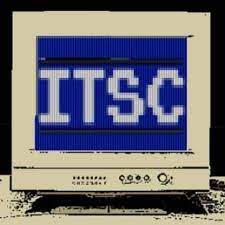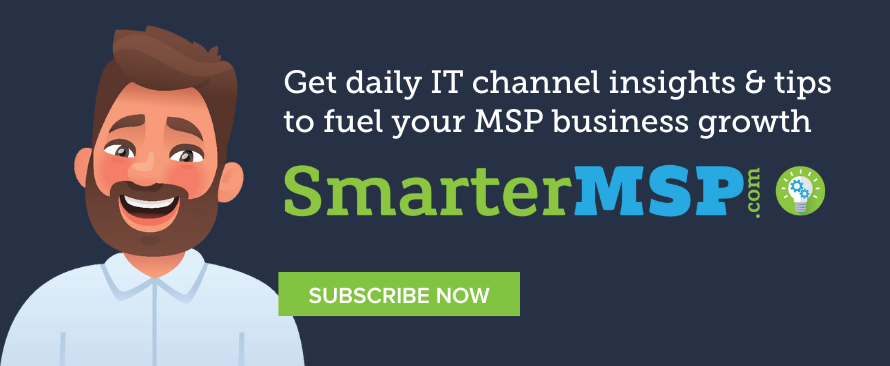
 Many businesses incorporate specific environmental, social, and governance (ESG) goals into their overarching strategies. These principles offer managed service providers (MSPs) a promising market, as a solution that helps clients meet their ESG demands may appear more valuable than an alternative. At the same time, marketing these service packages can be a complex task. Explore more in this edition of Tip Tuesday.
Many businesses incorporate specific environmental, social, and governance (ESG) goals into their overarching strategies. These principles offer managed service providers (MSPs) a promising market, as a solution that helps clients meet their ESG demands may appear more valuable than an alternative. At the same time, marketing these service packages can be a complex task. Explore more in this edition of Tip Tuesday.
You’ve likely seen statistics showcasing how both business-to-business (B2B) and business-to-consumer (B2C) markets are often willing to pay a premium for services that align with their environmental and social beliefs. However, recent ESG rollbacks may cast doubt, and the amount a customer will pay for specific services will vary. Consequently, using ESG features as a selling point is not always as straightforward as it seems. Here are some best practices to follow to navigate these complicated waters.
Understand what clients are willing to pay for
Research is the first step, as ESG is too broad a category to confidently assume your clientele will pay more for an ESG-focused package. You’ll need to research which ESG factors matter most to your niche and the amount they seem comfortable paying for them.
Although hard data may be scarce, you can make reasonable assumptions based on your target audience. At least 18 states have emissions reporting requirements, so businesses in these areas are likely more willing to pay a premium for carbon monitoring tools than those in other jurisdictions.
You should also consider the consumers in an area, even if you are not a B2C business. What matters to your clients’ customers matters to your clients by proxy. Consequently, you could charge more for a sustainable tech solution if your audience caters to an environmentally conscious market.
Target high-demand ESG selling points
Next, look for specific ESG features or selling points you can offer with your previous research in mind. Simply calling something “sustainable” or “low-carbon” isn’t enough. You must get more granular, and some ESG priorities are more sellable than others.
Carbon neutrality is the biggest environmental priority in 2025 for European CEOs, but U.S. executives are more concerned with climate resilience. As a result, you may see more success highlighting your solution’s ability to track or stave off the effects of natural disasters than in promoting its carbon footprint in a U.S. market.
Water consumption, renewable energy a,nd waste reduction are other key ESG targets for U.S. companies today. Any software that supports these goals — either by enabling better tracking of relevant metrics or by reducing the solution’s own wastefulness or emissions — may have an edge.
Consider less obvious ESG concerns
Similarly, there may be ESG-adjacent needs your service packages can meet. Some features and benefits do not impact ESG initiatives directly but are useful for end users pursuing these goals.
For example, many environmental programs rely on decades-old templates, so a consolidated and modernized reporting solution can go a long way as an ESG platform. Automated data entry and easy document transfers could be an option, too.
Productivity-focused features are a common selling point for MSPs in all niches, but you can frame them as environmental or social concerns. Explain to your clientele how reducing time spent on menial tasks gives them more time and resources to focus on what matters — making a positive impact in their communities.
Market the economic side of ESG benefits
How you market your service package’s ESG benefits matters, too. While promoting direct ESG benefits is important for some markets, other buyers may hesitate to pay a premium for such functionality unless they understand that it also carries economic advantages.
Research shows that firms with high ESG performance often experience lower borrowing costs, which can make up for higher software and service costs. Businesses investing in these initiatives may also see higher revenue from mindful consumers or greater funding from ESG-conscious investors.
Other selling points include higher savings from reducing waste or lower long-term energy costs through relying less on the volatile fossil fuel energy grid. The specific advantages vary depending on what service you’re offering your clientele, but there is always a financial case to make for ESG.
Look for underserved market opportunities
Finally, remember that your clientele’s ESG concerns are always shifting as markets change. Consequently, you’ll need to adapt over time, but this also means that there are usually untapped opportunities you can capitalize on if you act early.
Artificial intelligence (AI) is a great example. Many MSPs promote their AI tools, but AI’s growth means data centers could account for 6 percent of all electricity usage by 2026. Energy-efficient or water-efficient AI is an underserved niche you could target to set yourself apart from the crowd.
These areas will change rapidly as people’s focus shifts. As a result, your value statements will likewise need to evolve, but if you can stay on top of these trends, it could yield impressive results.
ESG-focused services require a unique marketing approach
ESG principles are one of many ways to promote your services as an MSP, but they’re an increasingly crucial one. However, you’ll need to adapt your marketing strategy if you hope to charge premium rates for serving these markets. Apply these five steps to your business today to set your solution apart from the competition.
Read the Tip Tuesday series for more insights on how to better your MSP business.
Photo: Yuri A / Shutterstock
This post originally appeared on Smarter MSP.

